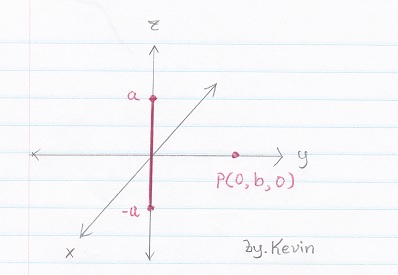
Field Theory - Online Tutorial 1 - New
by Kevin Tang , new update May 26, 2014
A charge ρl [C/m] is uniformly distributed on the line −a < z < a. and point P given P (0, b, 0)
Find the following...
* Please review this question, as I didn't solve it fully today ~ good luck :)
* Notice: any BOLD letter means that variable is a VECTOR.
1a) Draw the diagram
1b) Find r, r', r − r', | r − r' | and dQ.
1c) E at point (0, b, 0)
1a) Draw the diagram..
Solving Time: 3 min
SOLUTION 1a)
Shown in Figure #1 below...

Figure # 1
1b) Find r, r', r − r', | r − r' | and dQ.
Solving Time : 5 min
Let's have fun and give a try...(click the answer that you think it is correct)
Which one is r?
| A | B | C | D |
Which one is r'?
|
A |
B |
C |
Than you can get can get r − r' and | r − r' |
Next, which one is dQ?
|
A |
B |
C |
SOLUTION 1b)
Answer for r, r', r − r', | r − r' | and dQ.
Detail solution shown as following (shown in Figure #2)...
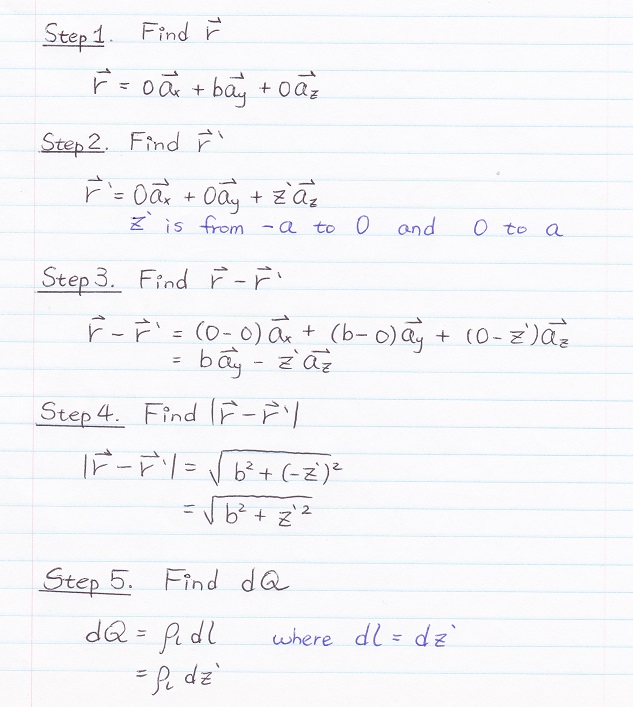
Figure # 2
1c) E at point (0, b, 0)
Solving Time : 15 min
SOLUTION 1c)
Actually the solution is much longer than I expected, please take a good look...
First, sub everything into dE
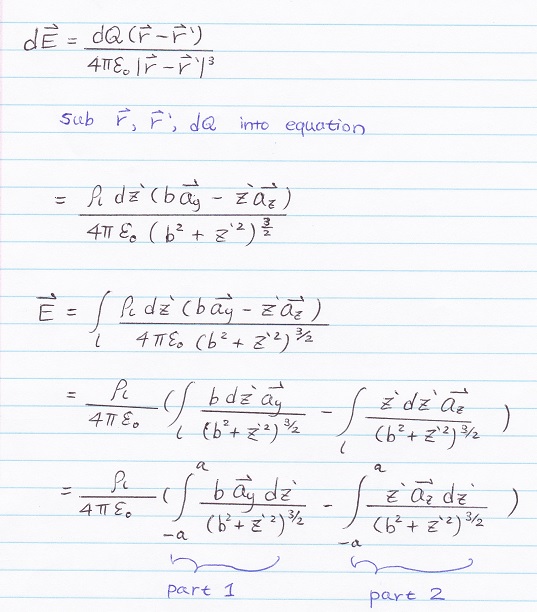
Figure # 3
Second, split the integral into 2 PART.
Remember, as I said in class, you can visually see that az part (part 2) will cancel out to zero due to symmetric,
however, here I am still going to show you how its lead to zero.
Now, we start with ay part (part 1) of the integral...(shown in Figure #4)
you need to applied integral by trigonometric substitution (or you can directly check it on Integral Table)
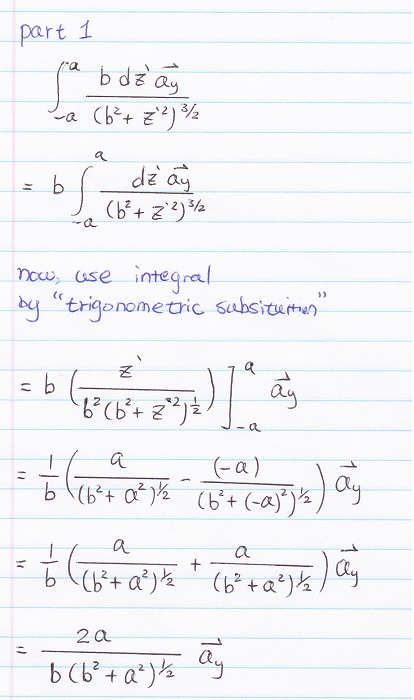
Figure # 4
.
.
.
.
Part 2, az part of integral, its will cancel out and lead to zero as shown following (shown in Figure #5)...
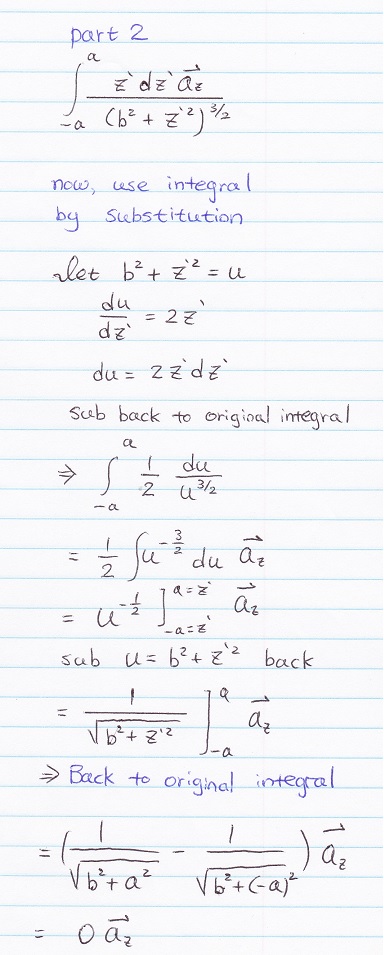
Figure # 5
Last step, sub everything into E, and you will get the final answer (shown in Figure #6) :)
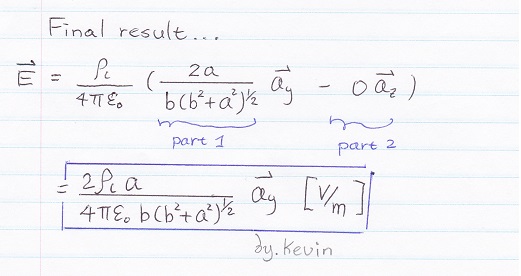
Figure # 6
You may leave me any message if you have any questions, I will try to answer ASAP, thanks and good luck :)